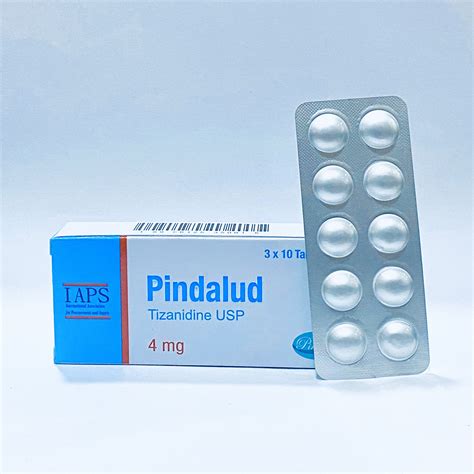Infant ear infections, also known as otitis media, are a common ailment affecting millions of children worldwide. These infections occur when bacteria or viruses invade the middle ear, causing inflammation and fluid buildup. As a result, infants may exhibit symptoms such as fever, irritability, and difficulty sleeping. It is essential for parents and caregivers to recognize the signs of an ear infection and seek medical attention to prevent potential complications.
Understanding the Anatomy of the Ear
To grasp the concept of ear infections, it is crucial to understand the anatomy of the ear. The ear consists of three primary parts: the outer ear, middle ear, and inner ear. The outer ear, also known as the pinna or auricle, collects sound waves and directs them into the ear canal. The middle ear, comprising the eardrum and three tiny bones (ossicles), transmits sound vibrations to the inner ear. The inner ear, responsible for hearing and balance, contains the cochlea and vestibular system.
Causes and Risk Factors
Ear infections in infants can be caused by various factors, including:
- Bacterial infections: Streptococcus pneumoniae, Haemophilus influenzae, and Moraxella catarrhalis are common bacteria that can infect the middle ear.
- Viral infections: Respiratory viruses, such as the common cold or flu, can spread to the middle ear and cause infection.
- Eustachian tube dysfunction: The Eustachian tube, connecting the middle ear to the back of the throat, can become blocked or dysfunctional, leading to fluid accumulation and infection.
- Anatomy: Infants’ Eustachian tubes are shorter and more horizontal, making it easier for bacteria and viruses to enter the middle ear.
Symptoms and Diagnosis
Recognizing the symptoms of an ear infection is critical to ensuring prompt medical attention. Common signs of an ear infection in infants include:
- Fever: A temperature above 100.4°F (38°C) can indicate an infection.
- Irritability: Infants may become fussy or irritable due to ear pain.
- Difficulty sleeping: Ear infections can cause discomfort, making it challenging for infants to sleep.
- Loss of appetite: Infants may exhibit a decrease in appetite due to ear pain or discomfort.
- Pulling or tugging at the ear: Infants may pull or tug at their ears to alleviate discomfort.
Diagnosing an ear infection typically involves a physical examination and medical history. A doctor may use an otoscope to visually inspect the ear canal and eardrum. If the eardrum is red, bulging, or has a visible perforation, it may indicate an infection.
Treatment Options
Treatment for ear infections in infants depends on the severity and cause of the infection. Common treatment options include:
- Antibiotics: If the infection is bacterial, antibiotics may be prescribed to help clear the infection.
- Pain management: Over-the-counter pain medications, such as acetaminophen or ibuprofen, can help alleviate ear pain and discomfort.
- Ear drops: Antibiotic or anesthetic ear drops may be prescribed to help manage pain and infection.
- Watchful waiting: In some cases, doctors may recommend a wait-and-see approach, monitoring the infant’s condition and treating symptoms as needed.
Prevention and Complications
While it is not possible to completely prevent ear infections, there are steps parents and caregivers can take to reduce the risk:
- Breastfeeding: Breastfeeding has been shown to reduce the risk of ear infections in infants.
- Avoid exposure to smoke: Secondhand smoke can increase the risk of ear infections.
- Keep infants upright: When feeding or playing, keeping infants in an upright position can help prevent fluid from accumulating in the middle ear.
- Practice good hygiene: Regularly washing hands and keeping toys and surfaces clean can help prevent the spread of infections.
If left untreated or poorly managed, ear infections can lead to complications, such as:
- Hearing loss: Recurrent or persistent ear infections can cause hearing loss or speech development delays.
- Eardrum perforation: The eardrum can rupture, leading to discharge and potential hearing loss.
- Mastoiditis: The mastoid bone, located behind the ear, can become infected, leading to serious complications.
It is essential for parents and caregivers to recognize the signs of an ear infection and seek medical attention promptly. By understanding the causes, symptoms, and treatment options, families can work together with healthcare providers to prevent complications and ensure the best possible outcomes for their infants.
Frequently Asked Questions
How common are ear infections in infants?
+Ear infections are one of the most common illnesses affecting infants and young children. According to the American Academy of Pediatrics, approximately 75% of children will experience at least one ear infection by the age of three.
Can ear infections be prevented?
+While it is not possible to completely prevent ear infections, there are steps parents and caregivers can take to reduce the risk. These include breastfeeding, avoiding exposure to smoke, keeping infants upright, and practicing good hygiene.
What are the potential complications of untreated ear infections?
+Untreated or poorly managed ear infections can lead to complications, such as hearing loss, eardrum perforation, and mastoiditis. It is essential to seek medical attention promptly to prevent these complications and ensure the best possible outcomes for infants.
How are ear infections diagnosed in infants?
+Diagnosing an ear infection in infants typically involves a physical examination and medical history. A doctor may use an otoscope to visually inspect the ear canal and eardrum. If the eardrum is red, bulging, or has a visible perforation, it may indicate an infection.
What are the treatment options for ear infections in infants?
+Treatment options for ear infections in infants depend on the severity and cause of the infection. Common treatment options include antibiotics, pain management, ear drops, and watchful waiting. It is essential to consult with a healthcare provider to determine the best course of treatment for each individual case.
In conclusion, infant ear infections are a common and potentially serious condition that requires prompt medical attention. By understanding the causes, symptoms, and treatment options, families can work together with healthcare providers to prevent complications and ensure the best possible outcomes for their infants. Remember, early recognition and treatment are critical to preventing long-term effects and promoting healthy development.



